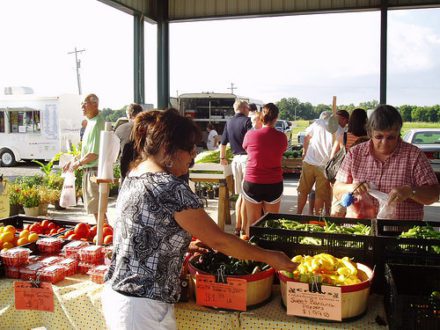May 25, 2017Lifestyle factors tied to CSA membership
If you’re a high earner and have a graduate degree, chances are you’d rather eat out than buy your food through a community supported agriculture (CSA) program, according to a national survey co-authored by a researcher at the University of Florida Institute of Food and Agricultural Sciences.
This was one of the several insights researchers gained into consumers’ intentions to participate in CSA, said Zhifeng Gao, associate professor of food and resource economics, and one of the study’s authors.
For instance, lifestyle choices such as vegetarianism or belonging to a gym are good predictors of current and future CSA membership, Gao said.
However, “while demographic factors such as race, gender, income and education don’t correlate with current CSA membership, income and education do impact whether people plan to join a CSA in the future,” Gao said. “We were surprised to find this difference between current participation and intent to participate.”
CSA allows farmers to directly market their products to local consumers, who pay a subscription in exchange for a share of the farmer’s expected yield.
Previous studies of CSA participation have only looked at particular regions within the U.S., and nearly all have focused on factors associated with current participation. The present study looked at consumer behavior at the national level and collected information on both current membership and intent to participate in CSA.
If CSA operators understand the habits and preferences of those who are more likely to become customers, they can better market their businesses, Gao said.
The number of CSA farms in the U.S. has grown from 500 farms in 1996 to more than 12,000 in 2012. With this expansion comes greater competition for customers, so CSA operators need to retain and attract customers more than ever, the study’s authors say.
The study’s findings suggest that high earners with advanced degrees are not the ideal audience for CSA. This demographic is more likely to eat out rather than prepare food at home, and busy schedules may not allow time to travel to a CSA farm to pick up products, Gao said.
“People who are vegetarians, go to the gym, recycle, like to cook and spend more on groceries — they are more likely to engage in CSA, now or in the future. CSA operations should target these consumers when recruiting new members,” Gao said.
Survey respondents’ reasons for choosing a CSA farm likewise offer clues into how to reach potential customers.
“In addition to wanting to support local and family farms, many we surveyed indicated that CSAs that offer organic products and a variety of foods are more attractive. Customers are also interested in operations that are transparent about how their food is produced,” Gao explained. “A CSA operator should promote his or her farm according to these aspects that consumers care about the most.”
How someone gets his or her information also impacts future CSA participation, researchers found. Those who put the greatest value on information received by word of mouth were those most likely to join a CSA program. Those who seek out information online or through news outlets were the next most likely to participate.
The study is published in the journal Sustainability.
— Samantha Grenrock, University of Florida
Source: UF/IFAS Blogs















